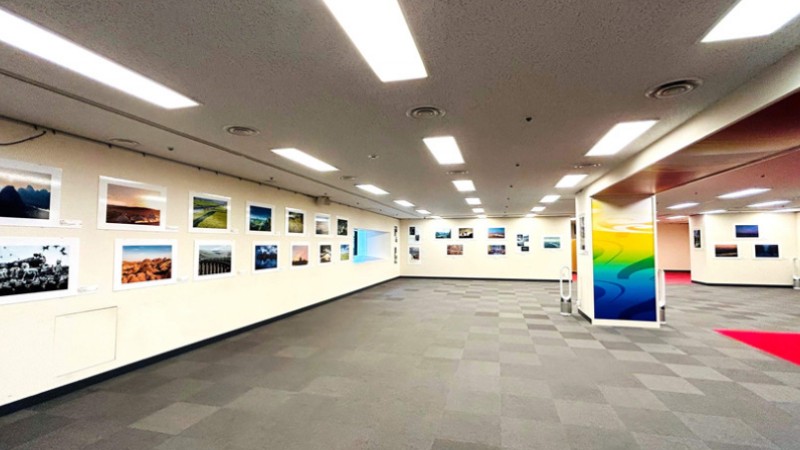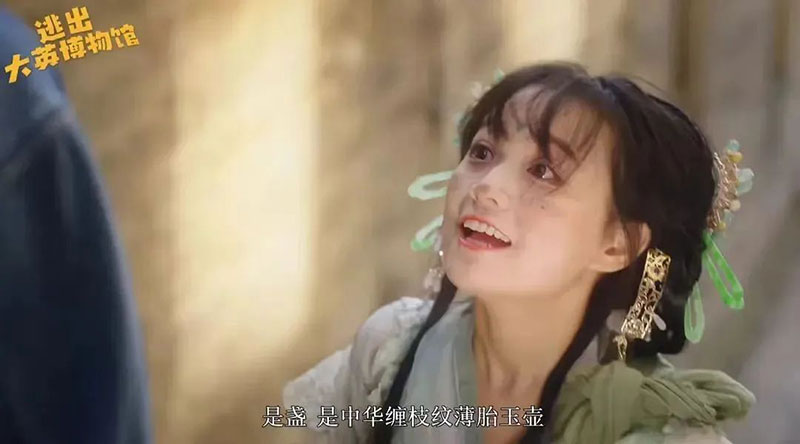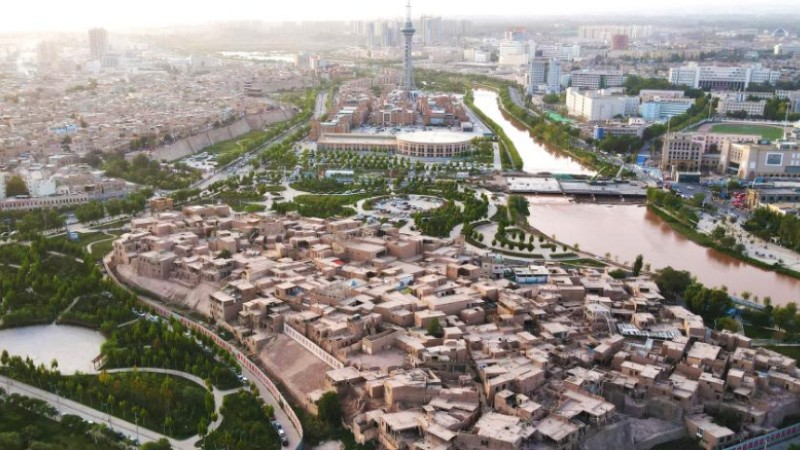Farmers embellishing rural lives through paintbrush strokes
JINAN, Sept. 12 (Xinhua) -- Seated in his courtyard, Zhang Zilong uses a traditional Chinese fan as his canvas, and with meticulous strokes, he paints a vivid rural landscape to depict distant hills and vibrant apricot blossoms.
Zhang, hailing from Houhuangma Village in Qingzhou City located in east China's Shandong Province, has battled physical disabilities since childhood. He initially earned a living through ceramic and glass painting. Subsequently, when the Qingzhou government arranged art training sessions for farmers, Zhang eagerly enrolled, aiming to further nurture his artistic talent.
"Farmer painting" is an art form rooted in agricultural life. To seek inspiration, Zhang frequently ventures outdoors to capture scenes of rural landscapes, harvest festivals and local customs with the strokes of his paintbrush. He then reinterprets these scenes in his unique style. As his skills improved, Zhang began selling his paintings and eventually established his own studio.
Farmers embracing paintbrushes as their creative tools is a growing trend in many rural areas in Shandong. These farmer-artists infuse life into the rural beauty through their art, and this, in turn, helps them in increasing their incomes.
Ma Xiuhua, founder of a rural farmer painting cooperative in Qingzhou's Mihe Township, said paintings by the farmers mostly serve as decorative art, often seen in rural resorts and kindergartens. Thanks to online platforms, customers across China can easily access these artworks.
"Successful farmer-artists can earn over 2,000 yuan (about 277.8 U.S. dollars) monthly and if their works are selected for exhibitions, they can receive additional rewards," Ma said.
Yang Lisheng, an official with the cultural affairs office in Qingzhou, said derivative cultural products inspired by these paintings have been developed. The paintings created by local farmers have been printed on various products such as ceramic plates, teapots, backpacks, silk scarves and T-shirts.
"A painting can be sold only once, but its derivative cultural products have enduring value," Yang said. "Selling these cultural products can bring more income than the paintings themselves."
The style of farmer paintings varies across different regions. In the rural areas of Juye County, located in Shandong's Heze City, meticulous peony wall paintings are a common sight.
Cheng Junwei, the director of Juye County Calligraphy and Painting Institute, said that through farmer painting training, villagers have acquired a profitable skill, allowing them to earn extra income during the agricultural off-season.
At present, there are eight townships and 50 villages in Juye County that specialize in farmer paintings. With about 160 painting training institutions established across the county, over 20,000 individuals are engaged in calligraphy and painting work. Their artworks are now exported to over 40 countries and regions.
"These artworks not only help increase earnings of the farmers but they are also revitalizing rural art education, subtly changing the rural landscape," said Wang Zhongwu, a professor at Shandong University.
Photos
Related Stories
Copyright © 2023 People's Daily Online. All Rights Reserved.









